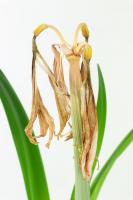When to Plant Pansies: A Guide for Gardeners
Introduction
Pansies are a popular choice for gardeners because of their bright colors and delicate appearance. If you're looking to add some color to your garden, you might be wondering when is the best time to plant pansies. In this article, we'll provide a guide for when to plant pansies, how to care for them, and some common problems to look out for.
When to Plant Pansies
Pansies are a cool-season flower and can be planted in the spring or fall. In the spring, you can plant pansies as soon as the ground is thawed and there is no longer a risk of frost. This is usually around mid-March to early April, depending on your climate. In the fall, you can plant pansies in August or September, depending on when the temperatures begin to cool down.
How to Plant Pansies
To plant pansies, you will need to prepare the soil by removing any debris and adding compost or other organic matter. Pansies prefer well-draining soil that is slightly acidic. You can plant pansies in containers or directly in the ground. When planting pansies, space them about six to eight inches apart, and make sure that they have access to enough sunlight or partial shade.
Caring for Pansies
Pansies require regular watering, especially during dry periods. However, be careful not to overwater them, as this can cause root rot. Pansies also benefit from regular deadheading, which involves removing the dead flowers to encourage new growth. You can fertilize pansies with a balanced fertilizer about once a month.
Common Problems
One common problem with pansies is powdery mildew, which can be caused by high humidity and poor air circulation. To prevent powdery mildew, make sure that your pansies have plenty of space and airflow. Another problem is root rot, which can be caused by overwatering or poor drainage. To prevent root rot, make sure that your pansies are planted in well-draining soil and that they are not overwatered.
Conclusion
Pansies are a colorful and delicate flower that can add beauty to any garden. Whether you plant them in the spring or fall, it's important to know when to plant them, how to care for them, and how to prevent common problems. Follow these tips, and you'll be able to enjoy beautiful, healthy pansies in your garden.

 how many times do yo...
how many times do yo... how many planted tre...
how many planted tre... how many pine trees ...
how many pine trees ... how many pecan trees...
how many pecan trees... how many plants comp...
how many plants comp... how many plants can ...
how many plants can ... how many plants and ...
how many plants and ... how many pepper plan...
how many pepper plan...































